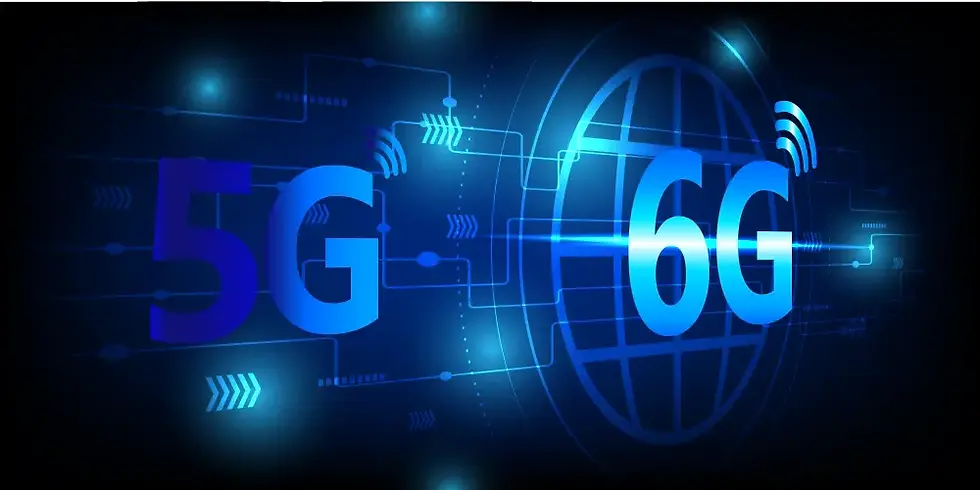Trends in Mobile Communication Techniques for 2025
- Tien Hoang Minh
- Jul 17, 2024
- 3 min read

The mobile communication landscape is constantly evolving, driven by technological advancements and the ever-increasing demand for faster, more reliable connectivity. As we look toward 2025, several key trends are set to shape the future of mobile communication. These trends promise to enhance user experiences, drive innovation, and expand the possibilities for both consumers and industries.
1. 5G Maturation and Beyond
Expansion of 5G Networks
By 2025, 5G networks will have reached a significant level of maturity. We can expect widespread adoption, with network coverage extending to rural and underserved areas. This expansion will bring high-speed, low-latency connectivity to more users, enabling a host of new applications and services.
Transition to 5G-Advanced
5G-Advanced, the next phase of 5G evolution, will introduce enhancements such as improved spectral efficiency, advanced antenna technologies, and better integration with other wireless networks. These improvements will lead to even faster data rates, more reliable connections, and increased network capacity.
2. Emergence of 6G
While 5G continues to roll out, research and development efforts are already underway for the sixth generation of mobile networks, or 6G. Expected to be deployed around 2030, 6G will bring unprecedented capabilities, including:
Terahertz Frequencies
6G will operate in the terahertz frequency range, offering significantly higher bandwidths and data rates than 5G. This will support applications requiring ultra-high-speed connectivity, such as real-time holographic communications and immersive virtual reality.
AI-Driven Networks
Artificial intelligence (AI) will play a central role in 6G networks. AI-driven algorithms will optimize network performance, manage resources dynamically, and enhance security. This will result in smarter, more efficient networks capable of adapting to changing conditions and user demands.
3. Edge Computing and IoT Integration
Proliferation of Edge Computing
Edge computing will become increasingly important as mobile networks evolve. By processing data closer to the source, edge computing reduces latency and improves real-time performance. This will be critical for applications like autonomous vehicles, smart cities, and industrial automation.
Integration with Internet of Things (IoT)
The integration of mobile networks with IoT devices will continue to expand. By 2025, we can expect billions of connected devices, ranging from smart home appliances to industrial sensors. This massive IoT ecosystem will rely on mobile networks for seamless communication and data exchange.
4. Enhanced Mobile Security
Quantum-Safe Encryption
With the advent of quantum computing, traditional encryption methods are at risk of being compromised. To address this, mobile networks will adopt quantum-safe encryption techniques, ensuring data remains secure even against quantum threats.
Zero-Trust Architecture
Zero-trust security models will become more prevalent in mobile communication. This approach assumes that threats can exist both inside and outside the network, and continuously verifies every request as though it originates from an open network. This will enhance security for both consumers and enterprises.
5. Advanced Antenna Technologies
Massive MIMO
Massive Multiple Input Multiple Output (MIMO) technology, already a key feature of 5G, will see further advancements. By employing a large number of antennas at the base stations, massive MIMO improves spectral efficiency and network capacity, providing better service to more users simultaneously.
Reconfigurable Intelligent Surfaces (RIS)
RIS technology involves the use of surfaces that can control electromagnetic waves. These surfaces can be integrated into buildings, vehicles, and other structures to enhance signal propagation and coverage. RIS will play a crucial role in improving connectivity in challenging environments.
6. Sustainable and Green Networks
Energy-Efficient Technologies
The push for sustainability will drive the adoption of energy-efficient technologies in mobile networks. This includes the use of AI to optimize energy consumption, deployment of renewable energy sources for base stations, and development of low-power communication protocols.
Circular Economy Practices
Mobile network operators will increasingly adopt circular economy practices, focusing on reducing electronic waste through recycling and reusing network equipment. This will help mitigate the environmental impact of expanding mobile infrastructure.
The mobile communication techniques of 2025 will be characterized by advancements in 5G and the emergence of 6G, the proliferation of edge computing and IoT integration, enhanced security measures, advanced antenna technologies, and a commitment to sustainability. These trends will not only transform how we connect and communicate but also drive innovation across various industries, paving the way for a more connected and efficient world. As these trends continue to evolve, staying informed and adaptable will be key for businesses and consumers alike to fully leverage the benefits of next-generation mobile communication technologies.




Comments